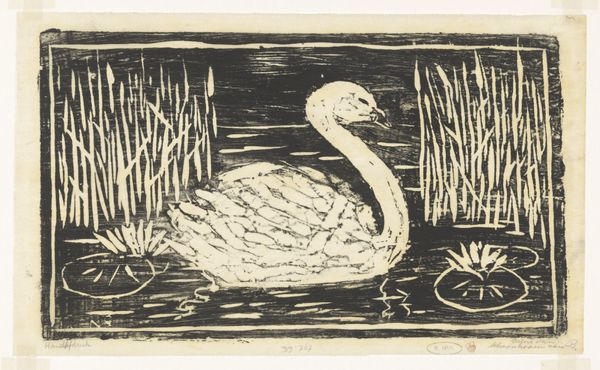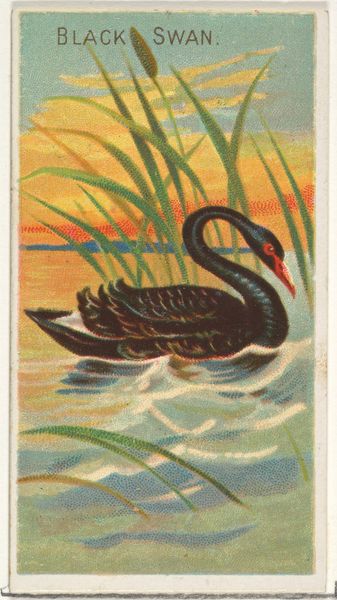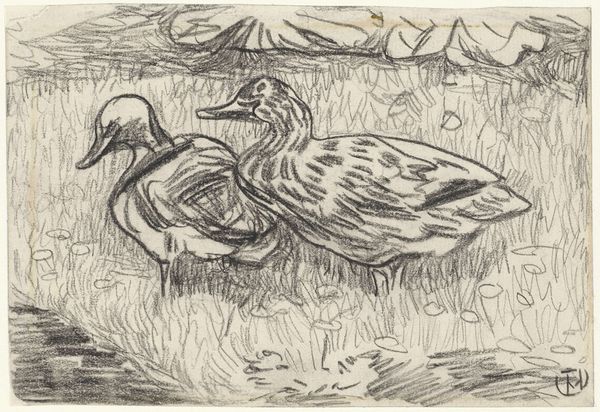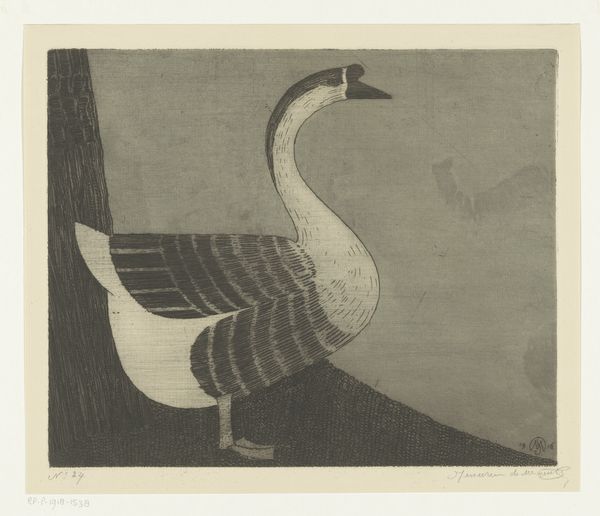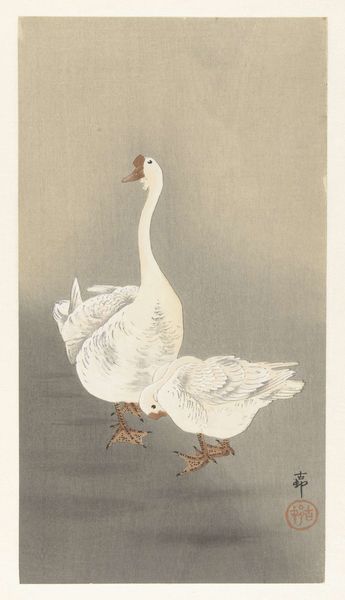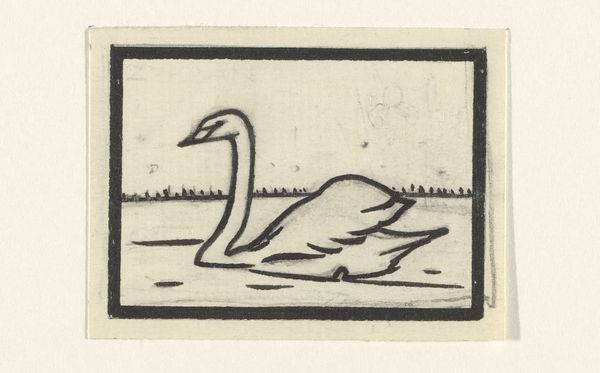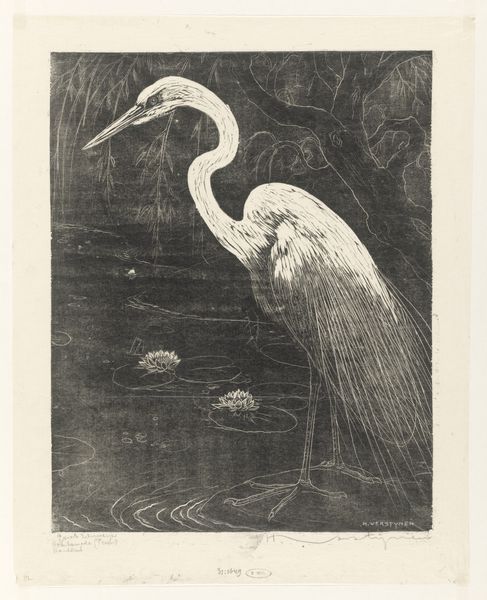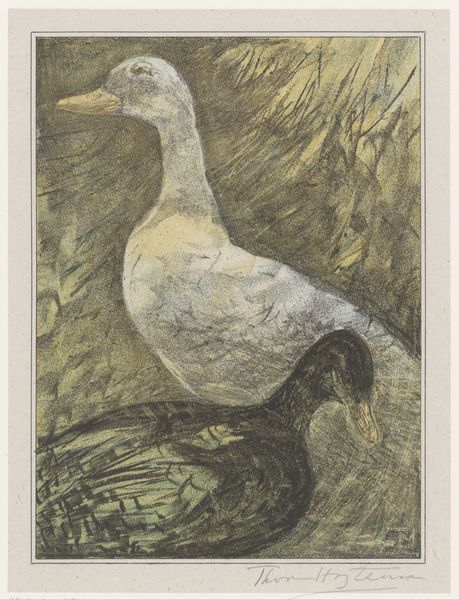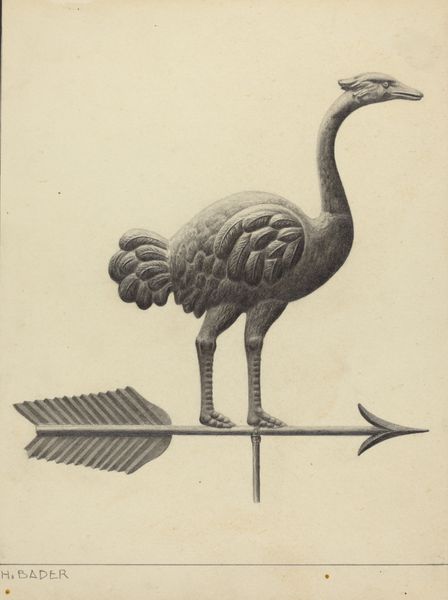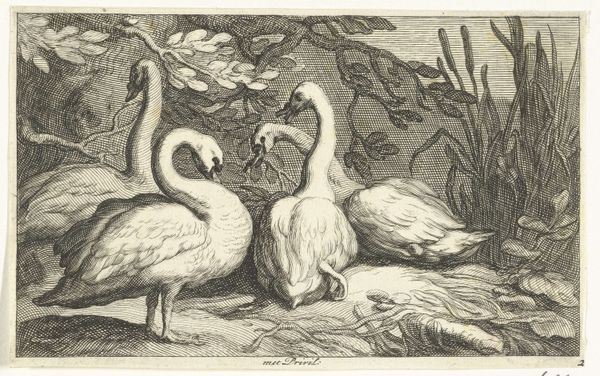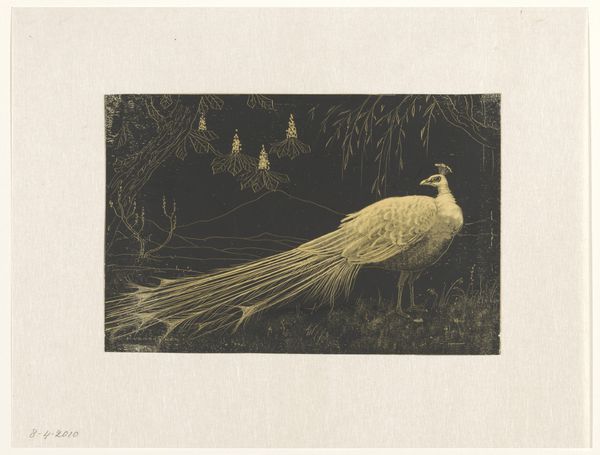
drawing, watercolor
#
drawing
#
landscape
#
watercolor
#
romanticism
#
naive art
Dimensions: 106 mm (height) x 103 mm (width) (bladmaal)
Curator: This watercolor drawing, titled "En svane på sort baggrund. Dekorativt udkast." which translates to “A swan on a black background. Decorative draft," comes to us from P.C. Skovgaard, dating sometime between 1817 and 1875. Editor: Striking! The deep black backdrop really makes that swan pop. Its color feels almost otherworldly, an amber against that void. Curator: It's quite unique, especially for its time. Skovgaard was a key figure in Danish Romanticism, a period when artists were deeply engaged with questions of national identity. They looked to the natural world and cultural history. It's interesting to consider this artwork might have served as a proposal, reflecting emerging aesthetic preferences within a rising middle class, one with both disposable income and cultural aspiration. Editor: Agreed, yet one cannot ignore its visual appeal. The careful placement of reeds, the scattered lily pads...it directs the viewer’s eye smoothly throughout the composition. The brushwork itself varies. Broad, smooth strokes define the swan, compared to the precise detail in the surrounding flora. The overall impact evokes a sense of tranquility. Curator: Perhaps. But Romanticism wasn't just about tranquil beauty. There was often an undercurrent of the sublime—an awe mixed with a hint of fear, or perhaps, a recognition of nature's power, even on a small scale such as this one. Editor: I still sense that stillness most strongly. And the composition of this work does have similarities with naive art; its stark contrast of elements lends a dreamlike quality, setting it apart from traditional landscapes. Curator: It’s that blending of stylistic influences and approaches to production—from Skovgaard's own landscape painting of the time and perhaps this work—that offers rich grounds for analysis of the time. Editor: Indeed, considering both the historical factors at play during the Danish Golden Age and the clear stylistic approaches he employs, what you said earlier comes back to my mind... a decorative piece such as this for an aspirational Danish middle class could also function as a type of nationalistic pronouncement about taste and design in this period. Fascinating.
Comments
No comments
Be the first to comment and join the conversation on the ultimate creative platform.
